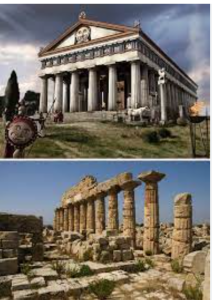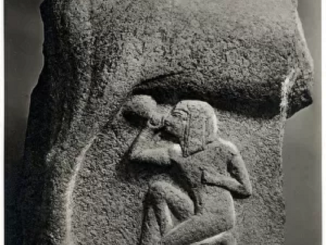Introduction
Nestled atop the rocky outcrop known as the Acropolis in Athens, Greece, the Parthenon stands as a testament to the ingenuity and spirit of ancient Greek civilization. This magnificent temple, dedicated to the goddess Athena, has weathered the sands of time, bearing witness to the ebb and flow of history across millennia. From its inception in the 5th century BCE to its role in the modern era, the Parthenon’s story is one of resilience, transformation, and enduring legacy. This blog post invites readers to embark on a visual and narrative journey through three significant periods in the life of the Parthenon, culminating in a fascinating exploration of recent ancient discoveries that continue to unveil its mysteries.
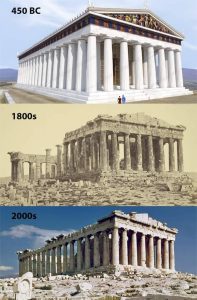
The Glory of Ancient Greece
In the 5th century BCE, Athens was at the zenith of its power, fresh from victory against the Persians. It was during this golden age that the Parthenon was conceived and constructed under the guidance of Pericles, a statesman, and Phidias, a renowned sculptor. The temple was an architectural marvel, embodying the ideals of symmetry, harmony, and excellence that defined classical Greek art and architecture. It housed a colossal statue of Athena, crafted from ivory and gold, symbolizing the city’s wealth, power, and patronage of the arts. Images capturing the Parthenon’s original splendor would reveal the intricate friezes and metopes, the majestic Doric columns, and the vibrant colors that adorned its façade, inviting readers to imagine the awe-inspiring presence of this ancient wonder.
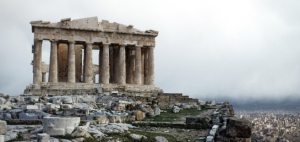
Byzantine, Latin, and Ottoman Conversions
As empires rose and fell, the Parthenon witnessed profound transformations. In the 6th century CE, it was converted into a Christian church dedicated to the Virgin Mary, reflecting the Byzantine Empire’s religious shift. Later, under Latin rule during the Fourth Crusade, it became a Roman Catholic cathedral, and finally, with the Ottoman conquest in the 15th century, it was repurposed as a mosque. Each of these conversions left indelible marks on the Parthenon’s structure and appearance. Through images of these periods, readers can trace the alterations in architectural elements, such as the addition of minarets or the Christian altar, illustrating the Parthenon’s evolving role as a place of worship for different faiths.
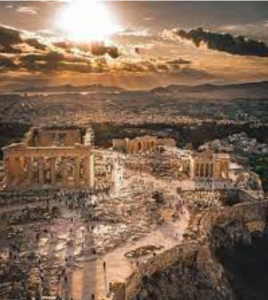
The Impact of Modernity
The Parthenon’s journey into the modern age has been marked by both reverence and tragedy. The explosion of a gunpowder magazine during the Venetian siege of 1687 inflicted severe damage, yet the ruins continued to inspire artists, poets, and scholars, embodying the romantic ideal of classical antiquity. The 19th century saw parts of its sculpture removed by Lord Elgin, igniting debates on cultural heritage that persist today. Contemporary images of the Parthenon, standing proudly against the Athens skyline, serve as a poignant reminder of its resilience and the ongoing efforts to preserve its legacy for future generations.
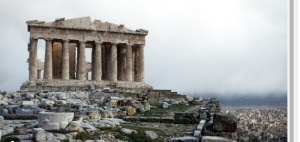
Unveiling Ancient Mysteries
Recent archaeological discoveries at the Acropolis have shed new light on the Parthenon’s past, unearthing artifacts and evidence that reveal the complexity of its construction and the daily lives of those who built and worshipped within its walls. These findings include tools used by ancient craftsmen, votive offerings to Athena, and inscriptions that hint at the temple’s multifaceted significance. By directing readers to view images of these discoveries, this section underscores the Parthenon’s capacity to continue revealing secrets of the ancient world, enriching our understanding of human history and culture.

Conclusion
The Parthenon’s story is far from complete. Each era, from the glory of ancient Greece to the present day, has contributed a chapter to its rich narrative, weaving a tapestry of human endeavor, creativity, and resilience. As we uncover more ancient discoveries, we not only deepen our appreciation for this architectural masterpiece but also connect with the countless individuals who have crossed its threshold, each leaving a mark on its storied stones. The Parthenon, standing resolute on the Acropolis, continues to beckon travelers, historians, and dreamers, inviting us to gaze upon it and ponder the enduring legacy of human civilization.
